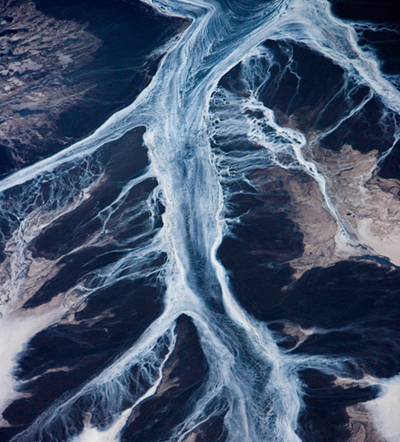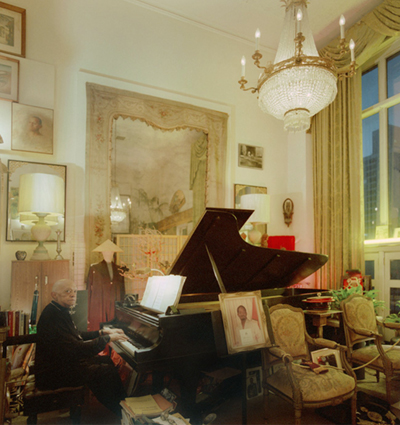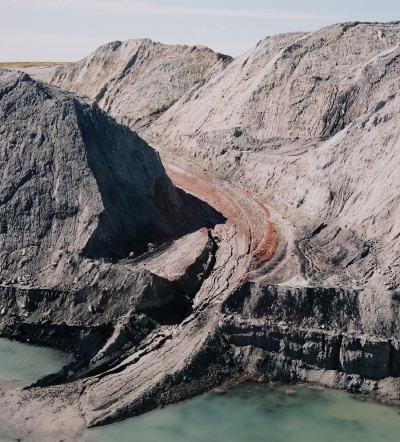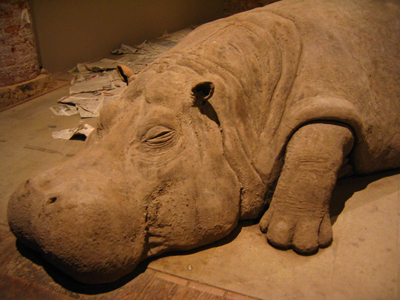Click for Slideshow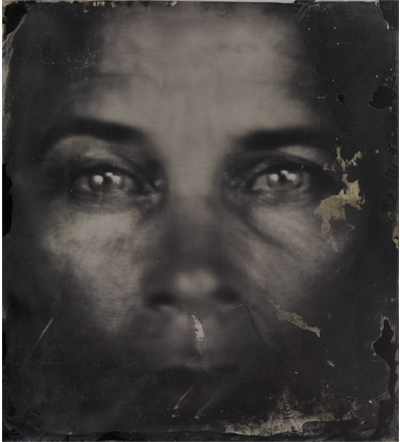
![]()
Sally Mann’s photographs have always had a tendency to unsettle people. Most famously, the photographer became a target of the culture wars in the early 1990s, when her direct, unsentimental images of her young children attracted national attention. Right-wing politicians were enraged that Mann, an artist supported by the National Endowment for the Arts, was photographing her children naked with bloody noses and urine-stained sheets. Unwittingly, she opened up a heated and vexing discussion about depictions of children in photography—a subject nuanced enough that it has inspired two novels to date: Kathryn Harrison’s Exposure and Dani Shapiro’s Black and White.
To Mann’s credit, there was no artistic compromise following her spell as a congressional punching bag. In the two decades since, she’s gone on to produce work every bit as challenging as her early images of her children. Now, The Flesh and the Spirit (Aperture), which accompanies a retrospective exhibition at the Virginia Museum of Fine Arts, gathers together nine series of her images. It confirms Mann’s position as a major American artist whose work is often beautiful, often disquieting, and sometimes both at once.
As the title implies, the images show an intense preoccupation with the human body and the relationship between its corporeal form and its animating life force.
(more…)


He’s been to many of the locales across the continent probably found toward the very end of most travelers’ sight-seeing lists: the deforested lands of Kenogami in Ontario, Canada; the mountaintops laid bare by coal miners in Appalachia; and the beds of petroleum coke in Texas City, Texas. J Henry Fair has journeyed to each of them so that those less inclined to follow this itinerary can simply view the pages of his book, The Day After Tomorrow: Images of Our Earth in Crisis. To be published by powerHouse Books in January 2011, it assembles 80 vivid color photographs from Fair’s 10-year-long and still ongoing project, “Industrial Scars,” which examines the repercussions of modern lifestyles on the natural landscape. Essays are interspersed throughout by prominent writers and environmentalists, including NASA’s James Hansen and Tensie Whelan of the Rainforest Alliance. For Fair, artwork is a call to action. Planet spoke to him about the power, the ugliness, and, yes, the beauty of his images.
Artists often resist giving the impression that there is any political motivation behind their work, but you are completely forthright. How did you decide to do away with any pretense about what you were hoping to communicate?
Well, why be pretentious? The first thing that I am asked when I show someone these pictures is ‘Oh my god, what is it?’ And actually the pictures came before the knowledge of what is it. I went looking for it, but I didn’t know what I’d found.
(more…)

From my regular column in AnOther magazine.
New York photographer Josef Birdman Astor is known among his peers as a “photographer’s photographer”. His work is revered for its technical mastery, ultimately made invisible by a beautiful use of light, shape, and concept. With the premiere last week of his first film – a documentary titled Lost Bohemia – he is now, too, an artist’s artist. For years, Astor was a resident of the Carnegie Hall Artist Studios, inhabiting one of only a handful of skylight residences atop the legendary music hall (160 studios were commissioned by Andrew Carnegie shortly after the hall was built to help foster the arts in America and New York City). For over 100 years, they have given innumerable artists and students an opportunity live, explore, study, and create – and they added immeasurably to the cultural heritage of the city in which they existed. Throughout the 20th century, some of America’s most important artists either lived, worked, or studied in the studios: Mark Twain, Marlon Brando, Isadora Duncan, Grace Kelly, Leonard Bernstein, Martha Graham, George Balanchine, James Dean, and from the 80s onward a number of well-known contemporary actors studied there including Michael Douglas, Denzel Washington, Mira Sorvino, and John Turturro. Now the two towers are being gutted and many 19th century staircases, skylights, and other architectural jewels will be destroyed to make way for new corporate offices, music classrooms, and a private rooftop terrace for trustees and donors of the Carnegie Hall Corporation.
(more…)

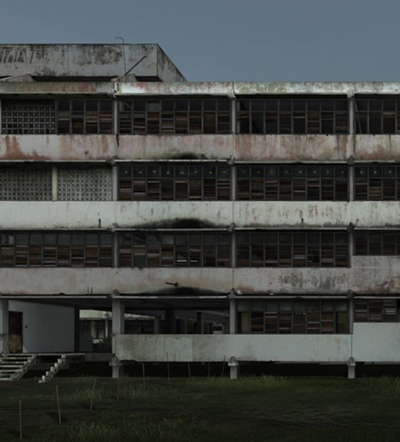
John Gerrard Cuban School (Community, 5th of October) 2010 Courtesy the artist and Simon Preston, New York (Click to enlarge)
Throughout his career, Vienna-based artist John Gerrard has continually explored the relationship between structures and their environments by charting the melancholic demise of our mechanical investments. His current exhibition, Cuban School, on view at NYC’s Simon Preston Gallery, is no exception; working from extensive photographs and topographical satellite data, Gerrard has re-constructed a simulated portrait of a school in Havana, Cuba, which we observe through the virtual lens of an unflinching 360-degree camera’s orbit. Steadily circling the structure that sits heavy, like a dinosaur’s skeleton, amidst vacant agricultural expanses, the projection is self-generating, continuously adjusting itself to engage with its viewers’ temporal reality. As the moments of a day piece themselves together — as the morning light softens, the afternoon light lengthens, as winter days grow shorter and summer days languish — so does Gerrard’s virtual world render itself: the sun moves appropriately, the dusk outside the gallery is mirrored and re-articulated in the dusk which settles like dust around the school. His footage is a veritable open system with an infinite duration, a post-cinematic performance of the passage of a year as it inflects this abandoned relic of a time gone-by.
(more…)



Final Tiaõ photographic print entitled Marat/Sebastiao–Pictures of Garbage Photograph by Vik Muniz, courtesy of Vik Muniz Studio
![]()
Waste Land is a powerful new documentary that follows Brazilian-born artist Vik Muniz to Jardim Gramacho, the world’s largest landfill, located on the outskirts of Rio de Janeiro, to photograph a spirited group of ‘catadores’, pickers of recyclable materials. The catadores eke out a living in the dump, sifting through endless mountains of ripe garbage, removing roughly 200 tons of recyclables a day. Unlikely stewards of the environment, the catadores reside on the fringes of society — in rubbish-strewn slums, ostracized, and misunderstood. Having built a successful art career using unconventional materials, Muniz arrived in Gramacho hoping to “change the lives of a group of people with the same material that they deal with everyday.” The resulting portraits, reconceived on a grand scale by the catadores themselves using hand-picked recyclables, take on a trajectory all their own, reawakening the lives of everyone involved in the collaboration. Directed by Lucy Walker, (Countdown to Zero, Devil’s Playground) and filmed over three years, Waste Land has been lauded with film festival awards, elicited standing ovations from Mexico City to Tokyo, and, along with Muniz’s photographs, helped raise thousands of dollars for the Association of Pickers of Jardim Gramacho (ACAMJG). A film of deep contrasts, Walker imbues the catadores with a sense of dignity and humor, bringing their bleak lives into sharp focus despite the sometimes overwhelming despair of the landfill. PLANET spoke with Vik Muniz and Lucy Walker about junk, the human factor, and the transformative power of art.
(more…)

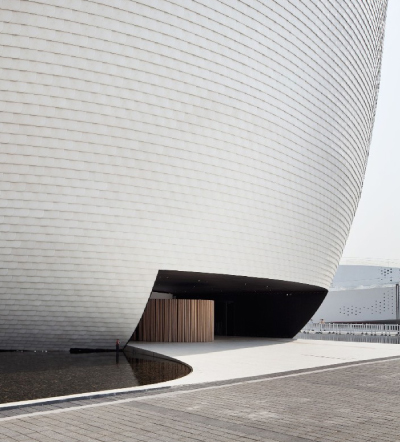
Finland's Shanghai Expo Pavilion, “Kirnu,” by JKMM (Finland), 2010. Photo: Derryck Menere. (Click to enlarge)
When the San Francisco Museum of Modern Art chose the Oslo-based architecture office Snohetta to design its addition this summer, it heralded the arrival of a great new wave of Nordic design. Not since the 1960’s, when Americans were lounging around in Verner Panton chairs and Marimekko dresses, has the voice of designers in Denmark, Finland, Iceland, Norway and Sweden been so prominent internationally.
An exhibit at Scandinavia House in New York, “Nordic Models + Common Ground: Art and Design Unfolded,” presents a small, intriguing selection of art and design projects. The unique character of modern Nordic design, a formal purity enlivened by gentle eccentricities, has often been attributed to the region’s isolating, rugged geography. Yet even in our present age of global connectedness these qualities remain evident. Each project on display combines forms and materials in unlikely ways. Yet even the strangest of them — like a rap song that outlines urban planning strategies, and light fixtures crafted from the dried skins of codfish — have a palpable warmth: they aren’t ironic.
In addition, each work on display has a startling formal simplicity, which owes less to a minimalist aesthetic than to the designer’s clarity in concept and economy in execution. This is especially remarkable in the architecture projects. A basic triangular tent module is arrayed to shape an exhibition pavilion. Another, spherical pavilion is clad entirely with flat, scale-like, composite wood shingles.
(more…)

Last April, the Deepwater Horizon tragedy showed us how crude oil can devastate an environment. But it’s not just explosions or spills that have hazardous effects on our fragile ecosystem. Sometimes, damage can be continuous and insidious—like it is at Colstrip, an enormous coal mine in southeastern Montana. Colstrip has the distinction of being one of the nation’s dirtiest, most polluting plants: each hour, it belches more than 400 pounds of sulfuric acid into the air, and its waste also filters down to the local water table, spreading toxins far and wide.
How do you convey this kind of unremitting, non-sensational damage? David T. Hanson took up the challenge, spending three years documenting the Colstrip plant and its surrounding town. His beautiful, melancholy images, which are now published in Colstrip, Montana (D.A.P.), were actually shot in the 1980s, but given our growing concerns about skyrocketing energy costs, peak oil, and environmental decay, they seem even more timely now.
The images are unsettling for several reasons. Hanson has a keen eye for color and composition, and there’s a classical beauty to most of the photographs. Shot from above, even deep gashes in the landscape and irridescent green waste ponds can look attractive, like a Rothko or Diebenkorn canvas. Even in devastation, there is beauty: anyone who doubts that need only look at Joel Meyerowitz’s photographs of Ground Zero or Robert Polidori’s studies of empty rooms after Katrina.
(more…)


Back in January, we stumbled upon an interesting reinterpretation of our now famous Issue One cover featuring the notorious Vincent Gallo. Although we weren’t certain of the artist who was responsible for the sketch, we speculated that perhaps the reinterpretation was a rendering by none other than the provocateur himself. Months later, we’ve found the real artist, John Paul Thurlow. The illustration is a part of the London- based illustrator ’s 100 Covers series, a collection of incredibly stunning and precisely illustrated re-interpretations of contemporary, classic, and little-known covers of magazines. PLANET spoke with JP about his upcoming 100 Covers exhibition at the KK Outlet, Vincent Gallo as a Christ-like figure, and his inspiration behind the series.
What was your inspiration and how did the Covers project come about?
I made a cover version of a 7″ single whilst at college years ago. It was “Yes Sir, I Can Boogie” by Baccara and I was a little confused as a kid about the gender of one of the singers. I loved the idea but forgot about it. The circumstances of the start of Covers were kind of fucked up. I was made redundant. I got very depressed. I went away on an artistic retreat to Japan. I lived in a Buddhist temple for a while. I started drawing, drawing the contents of my room. There was a copy of Elle I had for the flight. I drew it. I drew it again and again. I knew I had something, the college idea came back to me and I haven’t stopped working on it since then.
(more…)

![]()
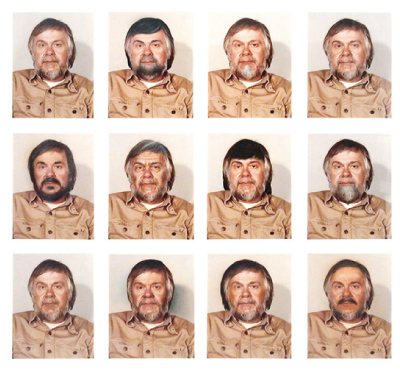
Portrait: (Self) #1 as Control + 11 Alterations by Retouching and Airbrushing, John Baldessari, 1974 (Click images to enlarge)
Painter, teacher, oddball, genius… John Baldessari has defied and surpassed many labels over the course of his career. But above all, nothing seems to fit quite as well as ‘radical’. Considered one of the most influential conceptual artists to come out of the 20th century, Baldessari was bucking the system long before it was cool, and then mundane to do so. A tireless champion of the idea that images and words are interchangeable, Baldessari’s work sought to marry the two entities once and for all. His early paintings earned him a bit of fame that quickly transformed into infamy when he burned nearly everything he’d created between 1953 and 1966 in the dramatically metaphorical, yet very literal, Cremation Project (1970). Baldessari then turned his attention to photography, film, found imagery, and the element of chance to achieve his new world view, drastically changing the way art was made. He hired sign painters and amateur artists to do his bidding, orchestrating elaborate photo series, video projects, and artist’s books such as Throwing Three Balls in the Air to Get a Straight Line. Whenever his interest for a project began to wane, he was off to the next idea— constantly tweaking, modifying and superimposing one philosophy or ideology onto another, looking for answers, challenging perception.
On October 20, John Baldessari: Pure Beauty (on its last leg following stints at the Tate Modern, Museu d’ Contemporani de Barcelona and LACMA) opened at New York’s Metropolitan Museum of Art. It’s the first major U.S. retrospective of his work in nearly 20 years.
(more…)



On September 8, 2010, the United States Bureau of Educational and Cultural Affairs announced that the artistic team of Puerto Rico-based Jennifer Allora and Guillermo Calzadilla, who have been working together since 1995, will represent the United States at the 2011 Venice Biennale.
Allora and Calzadilla’s work playfully explores relationships among art, politics and international identity through performances, video, sculpture, photography, sound pieces, and social interactions. It’s interesting to note that they will be the first collaborators, rather than a single artist, to represent the United States and the first time that a combination of performance and installation will occupy the pavilion. This shift toward, a more interdisciplinary art, one hopes, will provide a new space for contemporary artists working outside traditional realms of the art world.
This year marks the 54th Venice Biennale, which in many ways can be compared to the Olympic games of the contemporary art world. More than seventy nations are present. In 2009, Bruce Nauman represented the United States, before that, a posthumous Félix González-Torres. Allora and Calzadilla’s project for the Biennale will consist of six new site-specific works in a display curated by Lisa Freiman, chair of the Indianapolis Museum of Art’s contemporary art department. According to El Nuevo Día, Allora & Calzadilla will prepare six pieces to be placed inside and outside of the U.S. pavilion and will create works that “analyze contemporary geopolitics through the lens of spectacular nationalistic and competitive enterprises such as the Olympic Games, international commerce, war, the military-industrial complex, and even the Biennale itself”.
(more…)






 Facebook
Facebook Permalink
Permalink Digg
Digg Reddit
Reddit LinkedIn
LinkedIn StumbleUpon
StumbleUpon Tumblr
Tumblr